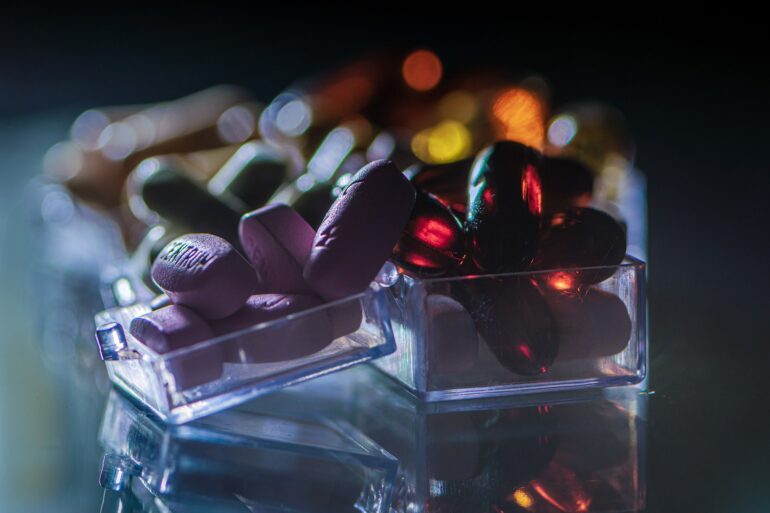TL;DR:
- Machine learning models accurately predict outcomes for inkjet-printed pharmaceuticals with a high accuracy rate of 97.22 percent.
- Inkjet printing optimization can be time-consuming, especially for additive manufacturing and personalized medicines.
- Machine learning surpasses conventional guidance based on Z values for predicting printability and dissolution behaviors.
- ML models used in the study include random forest, multilayer perceptron, and support vector machine.
- ML models not only predict printability but also forecast print quality with an accuracy rate of 97.14 percent.
- ML predictions can significantly accelerate formulation development and optimization processes.
- Inkjet printing finds applications in drug formulation, including orodispersible films, bioadhesive films, and transdermal microneedles.
- Inkjet printing allows dispensing of drug-loaded micro- and nanoparticles.
- Inkjet printing combined with other additive manufacturing technologies enables novel possibilities.
- Integration of inkjet printing with FDM™ 3D printing allows the production of drug-loaded tablets with printed QR codes for patient information and anti-counterfeit measures.
- ML models provide valuable predictive insights for inkjet printing outcomes, saving resources and time for pharmaceutical researchers.
Main AI News:
A recent study published in the International Journal of Pharmaceutics: X reveals the successful utilization of inkjet printing and optimized machine learning (ML) models to predict the printability of drug formulations. The ML models achieved an impressive accuracy rate of 97.22 percent in determining printability. This development is particularly significant for additive manufacturing, personalized medicines, and the production of unique dosage forms, as inkjet printing optimization can be time-consuming.
Traditionally, determining printability relies on guidance based on Z values, which are printhead settings. However, ML offers a more nuanced analysis and enhances the reliability of predictions for printing outcomes and dissolution behaviors. ML models have previously been used to predict outcomes for fused deposition modeling (FDM™) and digital light processing (DLP)-printed dosage forms and tablets.
The study highlights the potential of developing a predictive model for inkjet printing outcomes. By focusing on ML models, the researchers aimed to predict both inkjet printing printability and the total drug dose in the final printed dosage form. The ML models employed in the study included random forest, multilayer perceptron, and support vector machine.
The optimized ML models not only predicted printability accurately but also forecasted print quality with an impressive accuracy rate of 97.14 percent. This outperforms the conventional guidance, which states that only inks with Z values <10 are printable and achieve an accuracy rate of 64.39 percent. The enhanced printability predictions provided by ML models have the potential to significantly expedite formulation development and optimization processes.
Inkjet printing has diverse applications in drug formulation, such as loading drugs onto orodispersible films, bioadhesive films for cervical administration, and transdermal microneedles. Additionally, inkjet printing allows the dispensation of drug-loaded micro- and nanoparticles dispersed in the ink liquid. Combining inkjet printing with other additive manufacturing technologies enables novel possibilities which are otherwise unattainable using conventional methods.
One notable application of inkjet printing is its integration with FDM™ 3D printing to produce drug-loaded tablets with printed quick response (QR) codes. These codes serve a dual purpose of encoding patient-related information for smartphone reading and acting as an anti-counterfeit strategy. Inkjet printing has also facilitated the fabrication of orodispersible substrates, capsules with printed QR codes, and entire 3D drug-loaded tablets.
The study’s findings demonstrate the feasibility of ML models in providing valuable predictive insights into inkjet printing outcomes, allowing for resource and time savings. This advancement has the potential to empower pharmaceutical researchers to focus on devising unique dosage forms and solving unmet clinical challenges more efficiently.
Conlcusion:
The successful utilization of machine learning in predicting outcomes for inkjet-printed pharmaceuticals represents a significant advancement in the market. With high accuracy rates and the ability to expedite formulation development and optimization processes, machine learning models offer valuable insights and time-saving capabilities. This breakthrough has the potential to drive innovation in additive manufacturing, personalized medicines, and unique dosage forms.
By enabling more efficient and reliable inkjet printing outcomes, businesses in the pharmaceutical industry can benefit from increased productivity, reduced costs, and the ability to address unmet clinical challenges more effectively. The integration of machine learning with inkjet printing technologies opens up new avenues for market growth and sets the stage for transformative advancements in pharmaceutical manufacturing.

